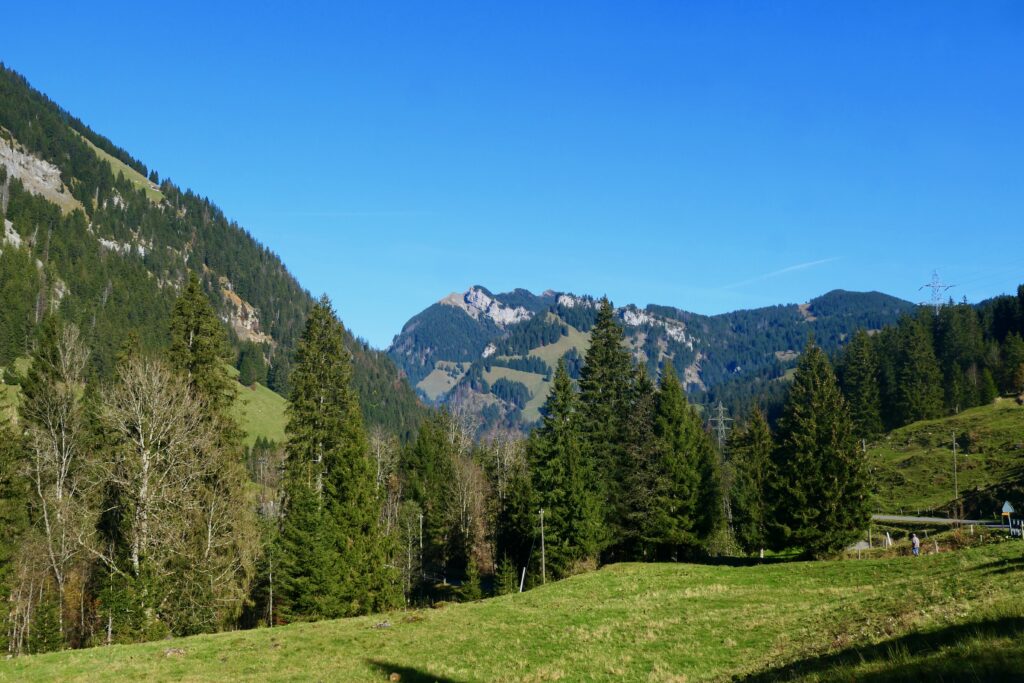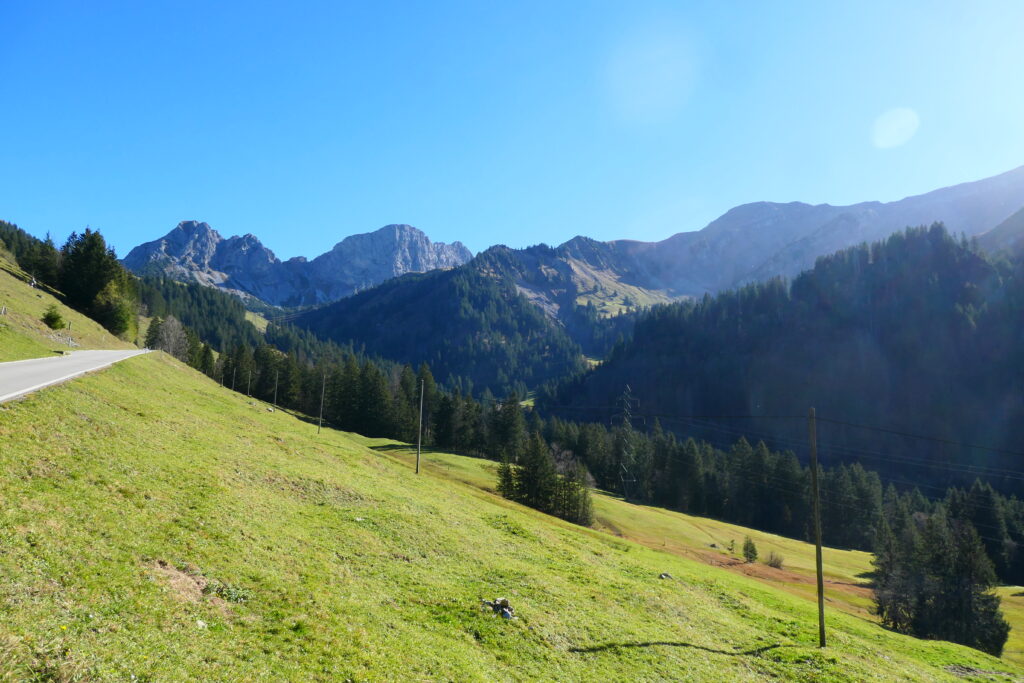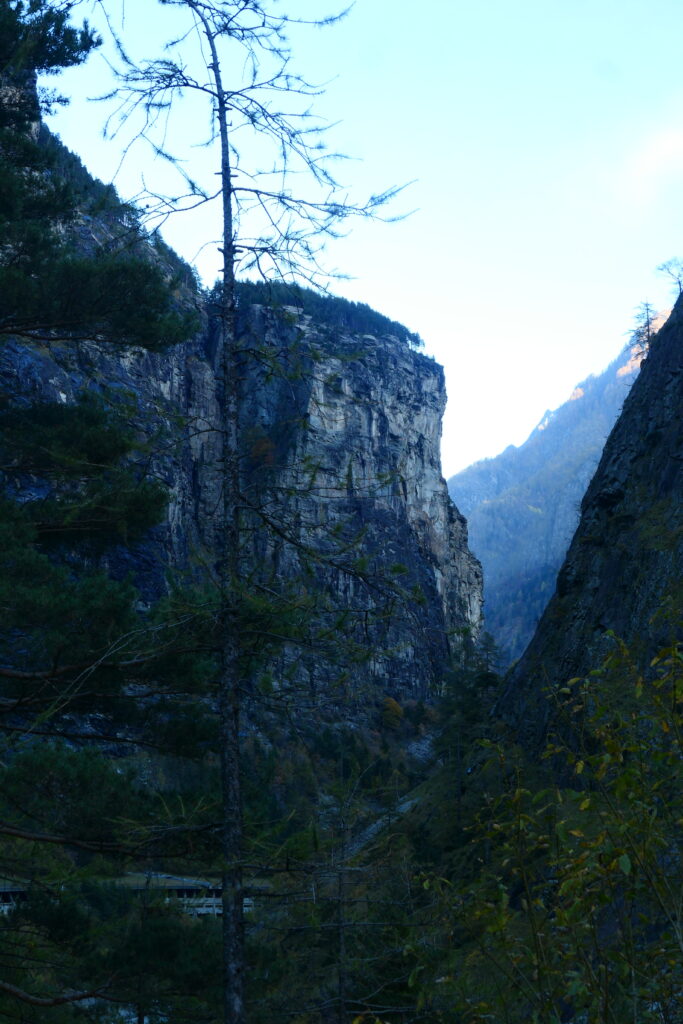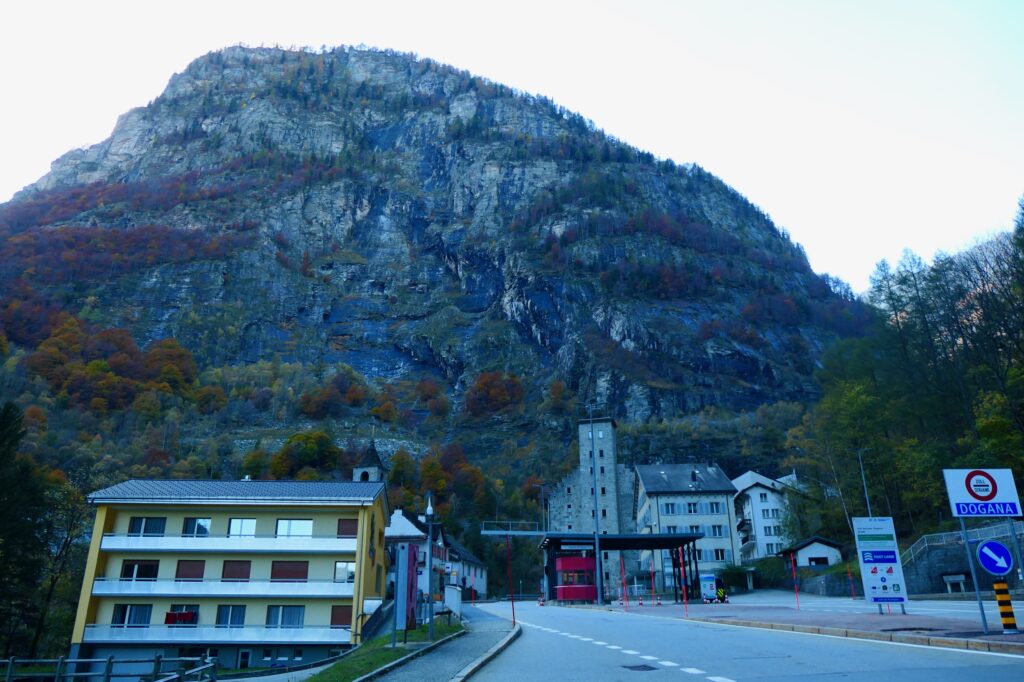Switzerland / Swiss Confederation – Let’s explore here

What’s it like in Switzerland?
Switzerland is a stunning country in central Europe, dominated by the Alps mountain range. The highest point is Mount Dufourspitze, on the border with Italy, at 15,203 ft (4,634m) above sea level.
The population of Switzerland is around nine million people (2023), about ½ million of whom live in the capital, Zurich. The mountains take up 60% of the country, so most of the population tends to live on the low-lying plains. Because of this, the towns and cities are pretty densely populated, and everything is very expensive, especially accommodation. That said, people tend to be wealthy there, and they enjoy a very high quality of life.
We’ve been through Switzerland many times, mainly on the way to Italy, and every time it never ceases to amaze us.

A bit about the history of Switzerland
Early History and Roman Influence
Switzerland’s history dates back to ancient times, with evidence of prehistoric settlements found throughout the country. By the 1st century BC, the region was part of the Roman Empire, known as the province of Helvetia. The Romans built roads, cities, and fortifications, which contributed to the development of Swiss territory.
Medieval Period and Formation of the Swiss Confederation
After the fall of the Roman Empire, the region was settled by Germanic tribes and became part of the Holy Roman Empire. In the 13th century, a series of alliances between local cantons (regions) formed the basis of the Swiss Confederation. These cantons came together primarily for mutual defense against external threats, particularly from the Habsburgs, who sought to expand their influence over the region. The Battle of Morgarten in 1315 and the Battle of Sempach in 1386 were pivotal victories for the Swiss, strengthening the confederation’s autonomy. By the late Middle Ages, Switzerland had established itself as a neutral and independent entity.
Swiss Independence and Expansion
During the 16th century, Switzerland gained further autonomy from the Holy Roman Empire. The country remained fiercely independent and even expanded its territories through military campaigns, notably in the Italian Wars. However, the country also experienced internal divisions, particularly between Catholic and Protestant regions, which resulted in religious conflicts.
Neutrality and the Swiss Constitution
Switzerland’s policy of neutrality became firmly established after the Napoleonic Wars in the early 19th century. In 1815, following the defeat of Napoleon, the Congress of Vienna recognised Switzerland’s perpetual neutrality, a stance that has been maintained ever since. In 1848, Switzerland adopted a new federal constitution, which established the country as a federal state with a system of direct democracy, giving the people the power to vote on major issues.
Industrialisation and Economic Growth
Switzerland underwent industrialisation in the 19th century, becoming a leading center for banking, finance, and watchmaking. Its neutral status helped it become a hub for international diplomacy and finance, attracting foreign investment and facilitating trade. The country also became known for its highly developed infrastructure and its commitment to education and innovation.
World Wars and Continued Neutrality
Although Switzerland remained neutral during both World War I and World War II, it was surrounded by warring nations and faced numerous challenges, including economic blockades and refugee crises. Despite this, Switzerland managed to maintain its independence and neutrality throughout the conflicts.
Post-War Era and Modern Switzerland
After World War II, Switzerland continued to prosper economically and became a key player in international diplomacy, hosting numerous international organisations, including the Red Cross and the United Nations Office at Geneva. Switzerland has also become known for its banking secrecy, high standard of living and strong economy. Today, Switzerland is a highly developed country with a high quality of life, advanced industries and a global reputation for neutrality, stability and direct democracy. It is not a member of the European Union but maintains strong ties with the EU and other international organisations.

Switzerland road trip
For our Swiss road trip, we travelled from Austria via the Norbertshöhe pass in order to travel the Albula, Lukmanier, Gotthard, Nufenen, Simplon, Furka and Susten passes. We do love our mountain passes! Each is amazing in its own way, and each is quite different from the others. Some are definitely more spectacular than others as well. We have a dedicated section to the passes below.
From Interlaken in the middle of the country, we headed on to Sörenberg, the Glaubenbielen pass, Giswil, the Glaubenberg pass, Entlebuch, the Weissenstein pass, Gänsbrunnen and northwards up to Basel.
Map of our road trip in Switzerland

Previous roads trips in Switzerland
We created a blog for one of our earlier road trips in Switzerland. You may find it helpful, and you may pick up some tips, or more likely mistakes not to make that we’ve made 😉 Our Swiss road trip was part of a much larger European road trip.
Our first Swiss road trip in 2023
For our first road trip through Switzerland in 2023 we travelled from Italy via the stunning Bernina and Flüela passes, before heading on to pristine Liechtenstein. Both of these passes are excellent and provide fantastic views, with lots of lay-bys to stop at to take photos 😉
Map of our first road trip through Switzerland

Our second Swiss road trip in 2023
We later came back to Switzerland from France, to take in Interlaken and Wengen, where I’d visited in my youth. They’re both in central Switzerland, and both are very pretty. In particular the dual lakes of Thunersee and Brienzersee, on either side of Interlaken are beautiful to behold. You can drive right around both lakes for some stunning views. Alternatively you can take a boat and enjoy a day out. Plus the magnificent Eiger and Jungfraujoch mountains dominate the area, and are truly spectacular.
We headed east to the truly amazing Grimsel and Furka passes before heading into Liechtenstein and Austria. Both of these passes are a must if you’re I the area, as the views that they provide are some of the best in Switzerland.
Map of our second road trip through Switzerland

Our third Swiss road trip in 2023
Lastly, after our mammoth European road trip was coming to an end in late December 2023, we travelled back to the UK from Italy, though Switzerland and France. On this journey we had to be very careful in our planning due to the extreme snow conditions that had closed much of Germany, Switzerland, Austria and northern Italy.
Map of our third road trip through Switzerland

Our favourite places in Switzerland
These are some of the best places that we explored on our road trips through Switzerland. We’ve put them in alphabetical order.
Mountain Passes
Some of the most famous mountains in the world are in Switzerland, e.g. Mont Blanc, the Eiger, the Matterhorn, and Switzerland has some of the best roads on the continent of Europe. There are a multitude of passes that are world famous, all of which offer fabulous, stunning views, and all of which are free to travel on (unlike in Austria).
It should be noted that most passes close over the winter period, so plan ahead! When in-country, there are regular signs along the roads which indicate whether the passes are open or closed, depending on the weather and snowfall.
We’ve driven extensively throughout Switzerland and some of our favourites that we’ve driven on include the Albulapass, the Berninapass, the Flüelapass, the Furkapass, the Glaubenberg pass, the Glaubenbielen pass, the Gotthard pass, the Grimselpass, the Lukmanier pass, the Nufenen pass, the San Bernardino pass, the Simplon pass, the Sustenpass and the the Weissenstein pass.
Albulapass
The Albulapass is a less well travelled pass than some of the more famous passes and it sits in the south east of the country. The road connects La Punt Chaumes to Thusis, via Bergün, and it rises to 7,585 ft (2,312 m).










Berninapass
The Berninapass is 7,638 ft (2,328 m) above sea level. It is one of the highest passes which is open all year round. It connects St. Moritz with the Italian-speaking Val Poschiavo, and ends at the Italian town of Tirano.








Flüelapass
The Flüelapass is 7,822 ft (2,384 m) above sea level, and runs from Susch to Davos. The road over the pass was built in 1867 to enable horse-drawn post coaches to travel over it. Even today a historic 6-horse post coach travels over the pass every Tuesday in the summer months from Davos-Platz to Flüela Hospiz and back.
When the Vereina railway tunnel was completed in 1999 the canton of Graubünden no longer wanted to keep the pass road open in winter and the ‘Pro Flüela’ association was founded. Dedicated members are allowed to keep the pass open between Tschuggen and Susch from the beginning of January to the beginning of May.



Fürkapass
The magnificent Fürkapass is located 7,969 ft (2,429 m) above sea level, and runs between Gletsch and Realp. It’s one of the most spectacular passes in Switzerland, and as such can be very busy during the summer months.
The Rhone Glacier, about 3 km below the ridge of the Fürkapass, has lost some of its spectacular size due to climate change. The Fürkapass is normally closed between November and late April.
















Glaubenberg pass
The Glaubenbielen pass is located in central Switzerland close to Lake Sarnen. The pass is 5,052 ft (1,540 m) above sea level, and runs between Sarnen and Entlebuch.
Quite a lot of the pass is single track and when we visited in November 2024, there was dense fog over much of the area. We had to stop and reverse our car regularly in the fog to let buses and agricultural vehicles pass.



Glaubenbielen pass
The Glaubenbielen pass is located in central Switzerland close to Lakes Brienz and Sarnen. The pass is 5,285 ft (1,611 m) above sea level, and runs between Sörenberg and Giswil. When we visited in November 2024, all of the valley where Giswil sits was covered by dense fog.






Gotthard pass
The Gotthard pass runs between Airolo and Andermatt in southern Switzerland, and is located 6,909 ft (2,106 m) above sea level. Although an important and well-known road in that it connects northern and southern Switzerland, the pass itself is quite short and not as spectacular as many others.





Grimselpass
The Grimselpass is 7,100 ft (2,164 m) above sea level, and runs between Gletsch and Meiringen. It is the only direct road between the cantons of Bern and Valais across the Bernese Alps. Over winter, extensive effort is made to keep the road open as long as possible – however it’s normally closed between November and late April.




Lukmanier pass
The Lukmanier pass is not as well known as many of the other mountain passes in Switzerland. It is located in the south of the country and runs from Disentis/Mustér to Biasca. the road rises to 6,473 ft (1,973 m).








Nufenen pass
The Nufenen is another spectacular mountain pass that’s not as well known as many others, despite the fact that it’s right next to the Gotthard pass. The pass runs between Airolo and Ulrichen in the south of Switzerland, and is located 8,130 ft (2,478 m) above sea level. It’s the second highest paved mountain pass n Switzerland.













Oberalp pass
The Oberalp Pass is 6,706 ft (2,044 m) above sea level, and connects Disentis/Mustér and Andermatt. It’s normally closed between November and late April. The source of the River Rhine is also located here.

Oberalp pass

San Bernardino pass
The San Bernardino pass is located in the south east of Switzerland, and lies 6,778 ft (2,066 m) above sea level. It links Thusis and Bellinzona. The pass closes between November and May.


Simplon pass
The Simplon pass lies in the south of Switzerland, on the border with Italy. It runs between Brig and Domodossola in Italy, and is located 6,581 ft (2,006 m) above sea level.









Susten pass
The beautiful Susten pass is a busy mountain pass, popular with tourists, that runs between Wassen and Innertkirchen. It’s located in central Switzerland, 7,415 ft (2,260 m) above sea level.










Some of our favourite Swiss towns
Ilanz
Ilanz is a small, pretty town in the south east of Switzerland. It’s home to a Dominican Convent that offers decent accommodation and vegetarian meals.

Interlaken
Interlaken is a beautiful town located between two lovely lakes, Lake Brienz in the east and Lake Thun in the west. It’s dominated by the magnificent Eiger, Mönch and Jungfrau mountains. More than a quarter of the town’s residents are foreign nationals, and it’s a very expensive place to live and stay.



What’s it like to drive in Switzerland?
As with almost everywhere on the continent of Europe, they drive on the right hand side of the road in Switzerland.
For the most part driving in Switzerland is a fairly laid-back affair due to there being so much traffic. When we’ve travelled between Switzerland and Italy, we’ve found that we can be stuck in queues on mountains for a long time. It also rains quite a lot in Switzerland. I guess each valley probably has its own microclimate. When it’s really wet, lorries often come to a standstill when driving up mountains, causing all kinds of traffic jams.
Within the larger cities, traffic is very ordered, slow moving, and can be a hassle with lots of traffic jams. That said, drivers are not aggressive, and tend not to use a car horn unless absolutely necessary. Road signage is very good. Tunnels are well lit and spotlessly clean – quite a marked difference from Italy btw!
Note that speeding is heavily penalised in Switzerland, and everyone tends to abide by the many rules and regulations.
Driving in the mountains in Switzerland
We’ve found that when driving on mountain passes, conditions can be difficult, and they’re not always open due to snow. There’s an unwritten rule that says that vehicles traveling down should stop and give right-of-way to ascending vehicles. Also, Postbus vehicles (the yellow busses) always have right-of-way on narrow mountain roads – you’ll know they’re there by the sounding of a horn ahead of the curve.


Do you require an international driving permit in Switzerland?
We’ve created a dedicated page to driving abroad, which answers this question, and more, which you might find helpful.
Can you use your UK driving license when driving through Switzerland?
We’ve created a dedicated page to driving abroad, which answers this question, and more, which you might find helpful.
Do I need a carnet de passages to drive in Switzerland?
We’ve created a dedicated page to driving abroad, which answers this question, and more, which you might find helpful.
What are the speed limits in Switzerland?
The speed limits for cars in Switzerland are:
- 30 mph (50 km/h) for urban driving
- 50 mph (80 km/h) outside of built up areas
- 60 mph (100 km/h) on dual carriageways
- 75 mph (120 km/h) on motorways
What currency do they use in Switzerland?
In Switzerland hey use the Swiss Franc. The use of credit / debit cards is now widespread. Traveller’s cheques are accepted. There are lots of ATMs.
You should make yourself aware of the amount that your bank charges you for using credit and debit cards abroad. Often credit cards are cheaper for purchasing items directly, and for withdrawing cash from ATMs.
What language do they speak in Switzerland?
They speak German, Italian, French and Romansh in Switzerland. We’ve found that English is also widely spoken in major cities, in particular by younger generations, though not in more rural areas.
What time zone is Switzerland in?
Remember, when you’re planning your next trip to take a look at what time zone it’s in.
Do I need a visa to visit Switzerland?
We’ve created a dedicated, more comprehensive page on visas, which you should find helpful. Check it out!
Is wild camping legal in Switzerland?
No, wild camping is illegal in Switzerland.
What plug / socket type do they use in Switzerland?

In Switzerland they use plug / socket type J.
Health issues in Switzerland
Is it safe to drink water in Switzerland?
Yes, it is safe to drink tap water in Switzerland. Bottled water is also readily available across the country.
What vaccinations are required for Switzerland?
This NHS website is kept up to date with all relevant information on vaccinations in Switzerland.
Phones in Switzerland
What is the country calling code for Switzerland?
The country calling code for Switzerland is +41
What are the emergency phone numbers in Switzerland?
- The emergency number for police in Switzerland is: 117
- In Switzerland, the emergency number for ambulance is: 144
- The emergency number for fire in Switzerland is: 118
If you’ve got some useful info that you’d like to share, let us know!
And don’t forget to check out all the other pictures!
